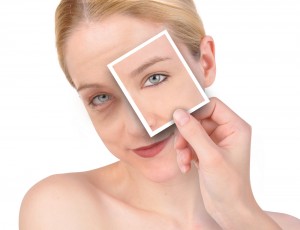 Blepharoplasty, commonly known as eyelid surgery, is a procedure that can be performed to enhance your facial aesthetics, creating positive changes to the eye area. It is one of the most frequently performed cosmetic surgical procedures and due to its popularity, we recently pulled Dr Steve Merten, a Fellow of the Royal Australasian College of Surgeons, aside to shed some light on candidacy, benefits and the blepharoplasty procedure. Read our Q&A with Dr Merten below to gain some insight into this popular facial rejuvenation surgery.
Blepharoplasty, commonly known as eyelid surgery, is a procedure that can be performed to enhance your facial aesthetics, creating positive changes to the eye area. It is one of the most frequently performed cosmetic surgical procedures and due to its popularity, we recently pulled Dr Steve Merten, a Fellow of the Royal Australasian College of Surgeons, aside to shed some light on candidacy, benefits and the blepharoplasty procedure. Read our Q&A with Dr Merten below to gain some insight into this popular facial rejuvenation surgery.
Question: Who is a good candidate for blepharoplasty?
Dr Merten: Best candidates for blepharoplasty are those with redundant skin in the upper eyelids and/or baggy lower eyelids. This could have been caused from genetics, ageing, lifestyle and/or sun damage. As with all cosmetic plastic surgery, good candidates are patients that have realistic goals and expectations. Healthy patients who don’t smoke are less likely to have complications, which helps candidacy as well.
Q: What are the main benefits of eyelid surgery?
Dr Merten: Blepharoplasty produces a refreshed, younger appearance by providing definition to your eyelids, with signs of puffy and tired eyes diminished. By improving and creating a firmer eye area, it can positively impact the entire facial aesthetic. The results also last for many years, and women are not the only ones who can benefit from blepharoplasty. In fact, eyelid surgery for men is very common.
Q: What is the difference between upper eyelid and lower eyelid blepharoplasty?
Dr Merten: Upper eyelid blepharoplasty focuses on removing excess skin and fat, whereas lower eyelid blepharoplasty removes fat, muscle and loose skin which can also help to remove the appearance of bags. For both upper and lower eyelid surgery, the incisions are placed on or adjacent to the natural crease lines, making any resultant scar minimally visible. If only fat is required to be removed from the lower eyelid area, the incision is made inside the lower eyelid, resulting in no visible external scar.
As with any cosmetic plastic surgery procedure, it is recommended to only be undertaken by an expert specialist plastic surgeon that has completed extensive training in their field.
Q: How long does the eyelid surgery procedure take?
Dr Merten: Eyelid surgery can take anywhere from 45 minutes to two hours for both upper and lower lids. This varies depending on the extent of the surgery. Further, blepharoplasty can be combined with other surgeries, most commonly a browlift. This combination is good when, due to gravity and ageing, the skin on the forehead drops and crowds the upper eyelids. This procedure can take up to three hours and further add to restoring a youthful appearance of the upper face. Blepharoplasty is also commonly combined with facelift surgery.
Of course, some patients are only concerned with only upper or only lower eyelids. An isolated upper eyelid reduction can be undertaken in less than an hour.
Q: On average, how long is the recovery process?
Dr Merten: Bruising and swelling is normal after the procedure which may take two to three weeks to fully subside. Techniques such as sleeping with your head elevated can help to reduce swelling. Ice packs can also be used to reduce any discomfort from incisions. In general, upper eyelid surgery takes quicker to heal from than lower eyelid surgery, however, it is important to remember that every patient heals differently and to follow post-operative instructions for maximal healing.
Contact Pure Aesthetics
For more information about blepharoplasty, or for any questions or concerns regarding eyelid surgery, please contact Pure Aesthetics today to schedule a consultation with Dr Steve Merten.




